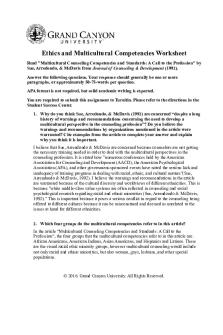Predator prey worksheet PDF

| Title | Predator prey worksheet |
|---|---|
| Author | Jimmie Hendrix |
| Course | Biology 1 |
| Institution | Mundy's Mill High School |
| Pages | 2 |
| File Size | 138.3 KB |
| File Type | |
| Total Downloads | 3 |
| Total Views | 147 |
Summary
This worksheets provides key notes for the relationships between predator and prey!...
Description
Predator-Prey Relationship!!
!
Name: ______________________________
Ecologists gather data about population densities of different organisms in order to understand how these organisms interact with their environments. The graph in Figure 1 represents a growth curve for the population of a single species. This type of curve is called a logistic growth curve. From this curve, you can read the carrying capacity of the population. Carrying capacity is the number of individuals that can be supported in an environment with the resources available. When the population has reached carrying capacity, the curve will level off.
1. Time is represented on the __________-axis. 2. The number of individuals is represented on the __________-axis. 3. At which point on the curve (I, II, III) is the population increasing at the fastest rate?_________ 4. At which point on the curve (I, II, III) is the population leveling off? ______________________ 5. At which point on the curve (A or B) has the population reached the carrying capacity or the maximum population density for its environment? _____________________________________ 1
Predation is not necessarily harmful to the prey population. Predation might act as an important means of keeping the prey population within the limits of its food supply. The graph shown in Figure 3 represents a theoretical cycle that evolves in a predator-prey relationship.
6. Read the following lettered descriptions. Use the letters to label the graph in order to show what is happening to the populations of predators and prey at each point marked on the curve. " a. Prey population rises due to decline in predator population. " b. Predator population rises due to increase in prey population. " c. Prey population falls due to increase in predation. " d. Predator population falls due to decline in prey population. " e. Prey population rises. 7. Could these growth curves for predators and prey actually represent what happens in nature? ______________________________________________________________________ Explain your answer. ___________________________________________________________ _____________________________________________________________________________
2...
Similar Free PDFs

Predator prey worksheet
- 2 Pages

Predator prey ws answers
- 2 Pages

Predator Prey Interactions KEY-1
- 11 Pages

Keystone Predator - Grade: 98
- 2 Pages

What is an apex predator
- 3 Pages

Worksheet
- 2 Pages

Worksheet#7(1) - worksheet
- 3 Pages

Ethics worksheet
- 4 Pages
Popular Institutions
- Tinajero National High School - Annex
- Politeknik Caltex Riau
- Yokohama City University
- SGT University
- University of Al-Qadisiyah
- Divine Word College of Vigan
- Techniek College Rotterdam
- Universidade de Santiago
- Universiti Teknologi MARA Cawangan Johor Kampus Pasir Gudang
- Poltekkes Kemenkes Yogyakarta
- Baguio City National High School
- Colegio san marcos
- preparatoria uno
- Centro de Bachillerato Tecnológico Industrial y de Servicios No. 107
- Dalian Maritime University
- Quang Trung Secondary School
- Colegio Tecnológico en Informática
- Corporación Regional de Educación Superior
- Grupo CEDVA
- Dar Al Uloom University
- Centro de Estudios Preuniversitarios de la Universidad Nacional de Ingeniería
- 上智大学
- Aakash International School, Nuna Majara
- San Felipe Neri Catholic School
- Kang Chiao International School - New Taipei City
- Misamis Occidental National High School
- Institución Educativa Escuela Normal Juan Ladrilleros
- Kolehiyo ng Pantukan
- Batanes State College
- Instituto Continental
- Sekolah Menengah Kejuruan Kesehatan Kaltara (Tarakan)
- Colegio de La Inmaculada Concepcion - Cebu







